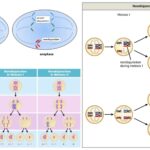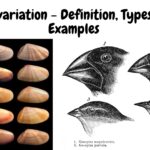Interpret and construct genetic diagrams, including Punnett squares, to explain and predict the results of dihybrid crosses that involve autosomal linkage and epistasis (knowledge of the expected ratios for different types of epistasis is not expected)
Interpret and construct genetic diagrams, including Punnett squares, to explain and predict the results of dihybrid crosses that involve autosomal linkage and epistasis (knowledge of the expected ratios for different types of epistasis is not expected)
Please login to submit an answer.
To interpret and construct genetic diagrams for dihybrid crosses involving autosomal linkage and epistasis, we’ll cover both concepts in detail, including how they affect inheritance patterns and how to create the corresponding Punnett squares.
Dihybrid Crosses and Autosomal Linkage
Definition: Autosomal linkage refers to the situation where two genes are located close together on the same chromosome. Because they are linked, they tend to be inherited together rather than assorting independently.
Example of Autosomal Linkage
Traits: Seed shape (Round, R, dominant over Wrinkled, r) and Seed color (Yellow, Y, dominant over Green, y).
Parental Generation (P):
- Parent 1: RrYy (Round Yellow)
- Parent 2: Rryy (Round Green)
Gametes: For Parent 1 (RrYy): RY, Ry, rY, ry
For Parent 2 (Rryy): RY, Ry, ry
Constructing the Punnett Square
Since we are considering linked genes, we can simplify by assuming no recombination occurs (the two traits will be inherited together). This means the linked allele combinations will be:
- Parent 1 produces gametes: RY and ry
- Parent 2 produces gametes: RY, Ry, ry
| RY | Ry | ry | |
|---|---|---|---|
| RY | RRY Y | RRYy | RrYy |
| Ry | RRYy | Rryy | Rryy |
| ry | RrYY | RrYy | rrYy |
Results
To count the phenotypes from the Punnett square:
- RRYY: Round Yellow
- RRYy: Round Yellow
- RrYY: Round Yellow
- RrYy: Round Yellow
- Rryy: Round Green
- rrYy: Wrinkled Yellow
- rryy: Wrinkled Green
Phenotypic Ratios:
- Round Yellow (R_Y_): 7
- Round Green (R_yy): 3
- Wrinkled Yellow (rrY_): 3
- Wrinkled Green (rryy): 1
The typical phenotypic ratio for a dihybrid cross without linkage is 9:3:3:1. However, due to linkage, the ratio can shift depending on how the alleles are inherited together.
Epistasis
Definition: Epistasis occurs when the expression of one gene is affected by another gene. This interaction can influence the phenotypic ratios of offspring.
Example of Epistasis
Traits: Coat color in Labrador retrievers is controlled by two genes:
- Gene 1 (B): Black color (B, dominant), Brown color (b, recessive)
- Gene 2 (E): Color (E, dominant) vs. No color (e, recessive). The e allele masks the expression of the B gene, causing the dog to be yellow regardless of the B allele.
Parental Generation (P):
- Parent 1: BbEe (Black)
- Parent 2: BbEe (Black)
Constructing the Punnett Square for Epistasis
In this case, each parent can produce four types of gametes: BE, Be, bE, and be.
| BE | Be | bE | be | |
|---|---|---|---|---|
| BE | BBEE | BBEe | BbEE | BbEe |
| Be | BBEe | BBee | BbEe | Bbee |
| bE | BbEE | BbEe | bbEE | bbEe |
| be | BbEe | Bbee | bbEe | bbee |
Results
Now, we can identify the phenotypes based on the genotype:
- BBEE, BBEe, BbEE, BbEe: Black (Color present)
- BBee, Bbee, bbEe: Brown (Color present)
- bbee: Yellow (Color masked by ee)
Counting Phenotypes:
- Black (B_E_): 9 (BBEE + BBEe + BbEE + BbEe)
- Brown (bbE_): 3 (bbEE + bbEe)
- Yellow (ee): 4 (BBee + Bbee + bbee)
Phenotypic Ratio:
- Black: 9
- Brown: 3
- Yellow: 4
Summary
- Dihybrid Crosses: When two traits are involved, the typical ratios can shift due to linkage.
- Autosomal Linkage: If genes are linked, they do not assort independently, affecting the expected ratios.
- Epistasis: This interaction can significantly alter phenotypic ratios depending on how the alleles interact.
- Share on Facebook
- Share on Twitter
- Share on LinkedIn
Helpful: 0%




